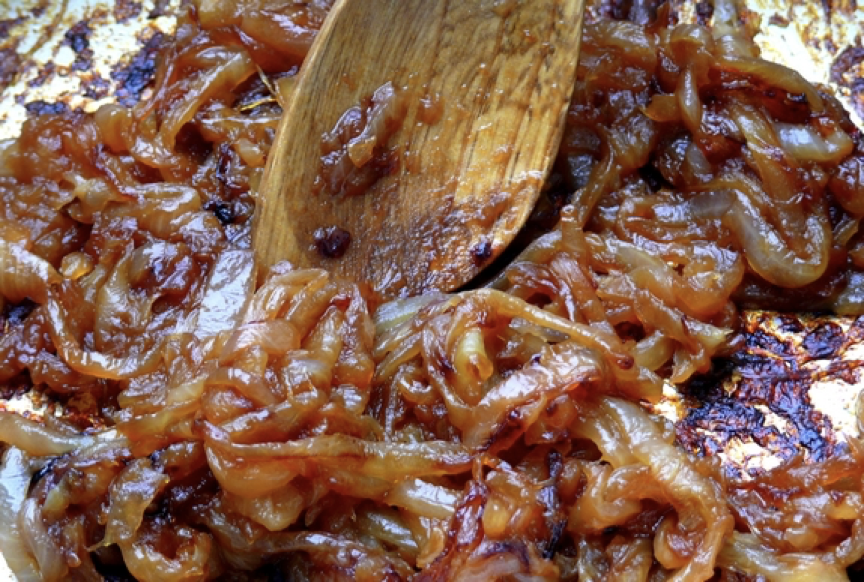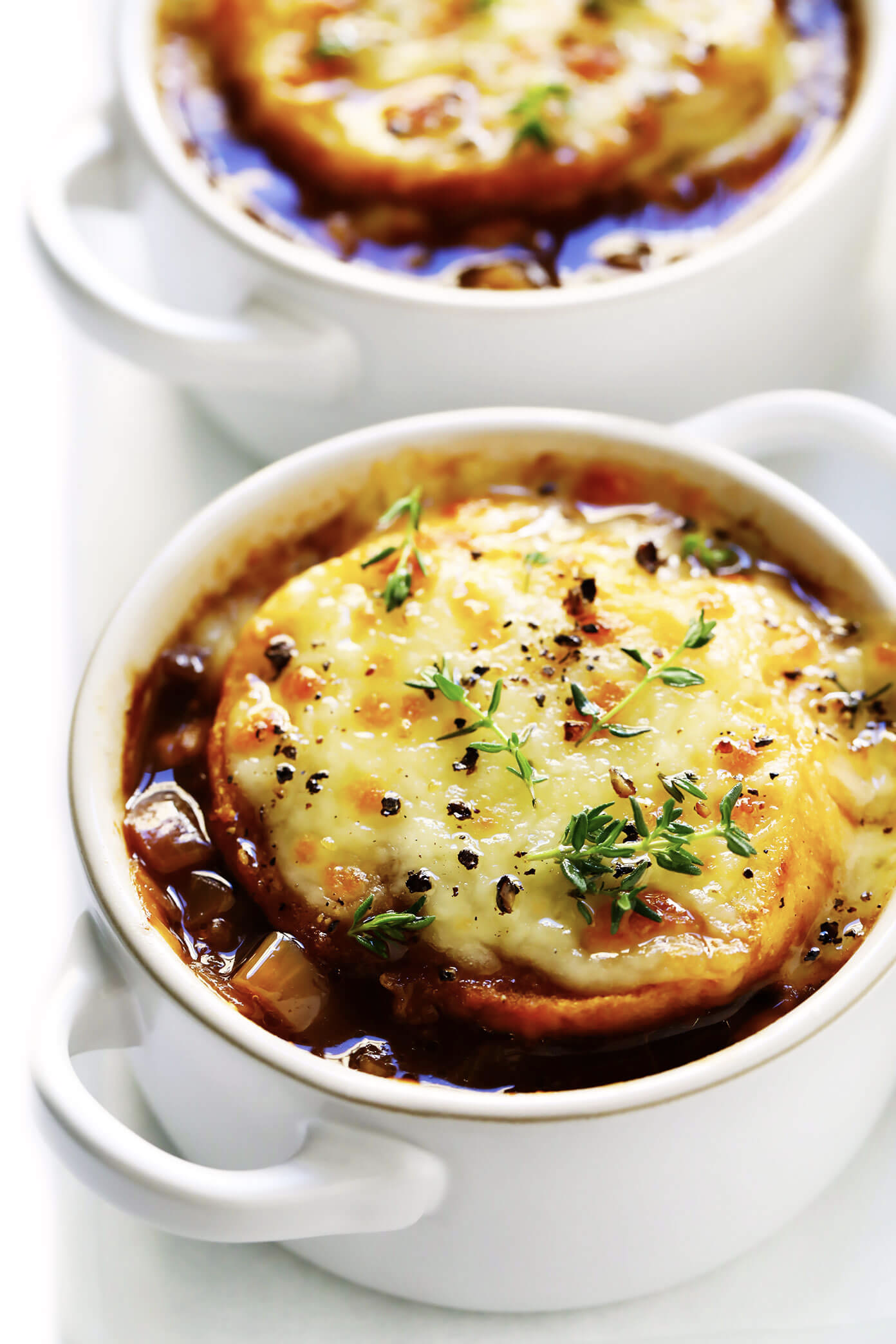Some Jokes and Some Topics NEVER Get Old!
Some of you might remember that timeless and funny movie scene where Groucho Marx is asked by a diner, “Waiter, what is this fly doing in my soup!?” And Groucho looks at the soup and says, “Hmm, looks like the backstroke.”

Some jokes never get old. And some topics never get old. Like soup, for instance. While we’re looking at another long, cold winter, sipping steaming hot soups and stews can keep us warm and toasty.
Don’t you love, though, how besides taking the bite out of a frosty night, soup is also a fuss-free and quick way to get dinner on the table? It’s truly a brilliant food. But there are even more benefits to soup. They promote health (as an easy and tasty vehicle to meet your daily quota for veggies). They are hydrating. They can boost the immune system and help soothe a sore throat. They can be inexpensive and easy to prepare. And most freeze well.

Then there are the heady aromas with which they fill the kitchen. Is there anything nicer than walking in the house and being able to tell, with one whiff, what’s for dinner?
The folks at America’s Test Kitchen agree. “Soups and Stews” is said to be one of their favorite topics of research and discussion. We can count on them to come up with ways to make proverbial favorites even better and ways to simplify more complicated recipes.
For instance, tortilla soup. They broke down the classic tortilla soup recipe to three main components, 1) the flavor base (tomatoes, garlic, onion, and chiles), 2) the chicken stock, and 3) the garnishes (including fried tortilla chips).

To achieve maximum flavor with the flavor base, they pureed the tomatoes, garlic, onions, and chiles (chipotle, jalapeños, and epazote), and then fried the puree in oil over high heat.
To achieve maximum flavor from the chicken stock, they infused it with more onions, garlic, some cilantro, and oregano; then they poached their chicken in it. When the chicken was cooked through, they strained it out of the stock and added the puree to the stock.
And for the garnish, they oven-toasted lightly oiled tortilla strips rather than frying them.
The next time you make your favorite tortilla soup recipe, why not try this Test Kitchen approach and see if it doesn’t take it to a new level.
Or how about French onion soup? The Test Kitchen pros discovered that the secret to a rich broth (the heart and soul of this soup) is to caramelize the onions fully. First, they cooked the onions in a covered pan for 2½ hours in a hot oven. They found that with this approach, they only needed to deglaze the onions on the stovetop three or four times.

For the delectable topping, they toasted the bread before floating it on the soup. This step prevented the bread from getting soggy. Since they were concerned about the addition of cheese overpowering the soup’s flavor (a common faux pas with most onion soups), they finished the dish by adding only a modest sprinkling of Gruyère.
The next time you make your favorite French onion soup recipe, why not try this Test Kitchen technique of first baking the onions in a hot oven and see if it doesn’t make all the difference to the end result.
I’ll close with one of our favorite French onion soup recipes—so perfect for a cold winter night. I found this on www.gimmesomeoven.com and use it over and over. I even call on this recipe as a base for my beef stew. See what you think.

4 pounds yellow onions peeled and thinly sliced (approximately 5–6 large onions)
3 tablespoons butter
4 cloves garlic minced
3 tablespoons flour
1/2 cup dry white wine
6 cups beef broth
1 teaspoon Worcestershire sauce
1 bay leaf
3 sprigs fresh thyme (or 1 teaspoon dried thyme)
fine sea salt to taste
freshly ground pepper to taste
1 baguette
grated or sliced cheese (such as Gruyere, Asiago, Swiss, Gouda or Mozzarella)
Directions:
Add Recipe to Cook'n
blog comments powered by Disqus

Some jokes never get old. And some topics never get old. Like soup, for instance. While we’re looking at another long, cold winter, sipping steaming hot soups and stews can keep us warm and toasty.
Don’t you love, though, how besides taking the bite out of a frosty night, soup is also a fuss-free and quick way to get dinner on the table? It’s truly a brilliant food. But there are even more benefits to soup. They promote health (as an easy and tasty vehicle to meet your daily quota for veggies). They are hydrating. They can boost the immune system and help soothe a sore throat. They can be inexpensive and easy to prepare. And most freeze well.

Then there are the heady aromas with which they fill the kitchen. Is there anything nicer than walking in the house and being able to tell, with one whiff, what’s for dinner?
The folks at America’s Test Kitchen agree. “Soups and Stews” is said to be one of their favorite topics of research and discussion. We can count on them to come up with ways to make proverbial favorites even better and ways to simplify more complicated recipes.
For instance, tortilla soup. They broke down the classic tortilla soup recipe to three main components, 1) the flavor base (tomatoes, garlic, onion, and chiles), 2) the chicken stock, and 3) the garnishes (including fried tortilla chips).

To achieve maximum flavor with the flavor base, they pureed the tomatoes, garlic, onions, and chiles (chipotle, jalapeños, and epazote), and then fried the puree in oil over high heat.
To achieve maximum flavor from the chicken stock, they infused it with more onions, garlic, some cilantro, and oregano; then they poached their chicken in it. When the chicken was cooked through, they strained it out of the stock and added the puree to the stock.
And for the garnish, they oven-toasted lightly oiled tortilla strips rather than frying them.
The next time you make your favorite tortilla soup recipe, why not try this Test Kitchen approach and see if it doesn’t take it to a new level.
Or how about French onion soup? The Test Kitchen pros discovered that the secret to a rich broth (the heart and soul of this soup) is to caramelize the onions fully. First, they cooked the onions in a covered pan for 2½ hours in a hot oven. They found that with this approach, they only needed to deglaze the onions on the stovetop three or four times.

For the delectable topping, they toasted the bread before floating it on the soup. This step prevented the bread from getting soggy. Since they were concerned about the addition of cheese overpowering the soup’s flavor (a common faux pas with most onion soups), they finished the dish by adding only a modest sprinkling of Gruyère.
The next time you make your favorite French onion soup recipe, why not try this Test Kitchen technique of first baking the onions in a hot oven and see if it doesn’t make all the difference to the end result.
I’ll close with one of our favorite French onion soup recipes—so perfect for a cold winter night. I found this on www.gimmesomeoven.com and use it over and over. I even call on this recipe as a base for my beef stew. See what you think.

French Onion Soup
Ingredients:
4 pounds yellow onions peeled and thinly sliced (approximately 5–6 large onions)
3 tablespoons butter
4 cloves garlic minced
3 tablespoons flour
1/2 cup dry white wine
6 cups beef broth
1 teaspoon Worcestershire sauce
1 bay leaf
3 sprigs fresh thyme (or 1 teaspoon dried thyme)
fine sea salt to taste
freshly ground pepper to taste
1 baguette
grated or sliced cheese (such as Gruyere, Asiago, Swiss, Gouda or Mozzarella)
Directions:
1. Caramelize the onions. [ALICE’S NOTE: Why not try the America’s Test Kitchen technique first?] In a large heavy-bottomed stockpot, melt the butter over medium-high heat. Add the onions and sauté until well for about 30 minutes until caramelized (but not burnt), initially stirring every 3-5 minutes, then about once a minute near the end of caramelization to prevent burning*. Add garlic and sauté for 2 minutes. Stir in the flour and cook for an additional 1 minute. Stir in the wine to deglaze the pan, using a wooden spoon to scrape up any browned bits on the bottom of the pan.
2. Simmer the soup. Add the stock, Worcestershire, bay leaf, and thyme and stir to combine. Continue to cook until the soup reaches a simmer. Then reduce heat to medium-low, cover and simmer for at least 10 minutes. Discard the bay leaf and sprigs of thyme. Taste the soup and season with salt and pepper as needed.
3. Toast the bread. Preheat oven to 400°F. While the soup is simmering, slice the baguette into 1-inch thick pieces and arrange them in single layer on baking sheet. Bake for 6-8 minutes, until the bread is toasted and golden around the edges. Remove and set aside.
4. Broil the topping. Switch the oven to the broiler. Once the soup is ready to serve, place your oven-safe bowls on a thick baking sheet. Ladle the soup into each bowl, then top with a baguette slice and your desired amount of cheese (I used about 1/4 cup shredded cheese for each). Place on an oven rack about 6 inches from the heat and broil for 2-4 minutes, or until the cheese is melted and bubbly. (Keep a close eye on them so that they do not burn.) Remove from the oven and serve immediately while the soup is hot and bubbly.
2. Simmer the soup. Add the stock, Worcestershire, bay leaf, and thyme and stir to combine. Continue to cook until the soup reaches a simmer. Then reduce heat to medium-low, cover and simmer for at least 10 minutes. Discard the bay leaf and sprigs of thyme. Taste the soup and season with salt and pepper as needed.
3. Toast the bread. Preheat oven to 400°F. While the soup is simmering, slice the baguette into 1-inch thick pieces and arrange them in single layer on baking sheet. Bake for 6-8 minutes, until the bread is toasted and golden around the edges. Remove and set aside.
4. Broil the topping. Switch the oven to the broiler. Once the soup is ready to serve, place your oven-safe bowls on a thick baking sheet. Ladle the soup into each bowl, then top with a baguette slice and your desired amount of cheese (I used about 1/4 cup shredded cheese for each). Place on an oven rack about 6 inches from the heat and broil for 2-4 minutes, or until the cheese is melted and bubbly. (Keep a close eye on them so that they do not burn.) Remove from the oven and serve immediately while the soup is hot and bubbly.
Recipe formatted with the Cook'n Recipe Software from DVO Enterprises.
Sources:
- www.theraflu.com
- www.averiecooks.com
- www.noblepig.com
- www.gimmesomeoven.com
 Alice Osborne
Alice Osborne
Weekly Newsletter Contributor since 2006
Email the author! alice@dvo.com
